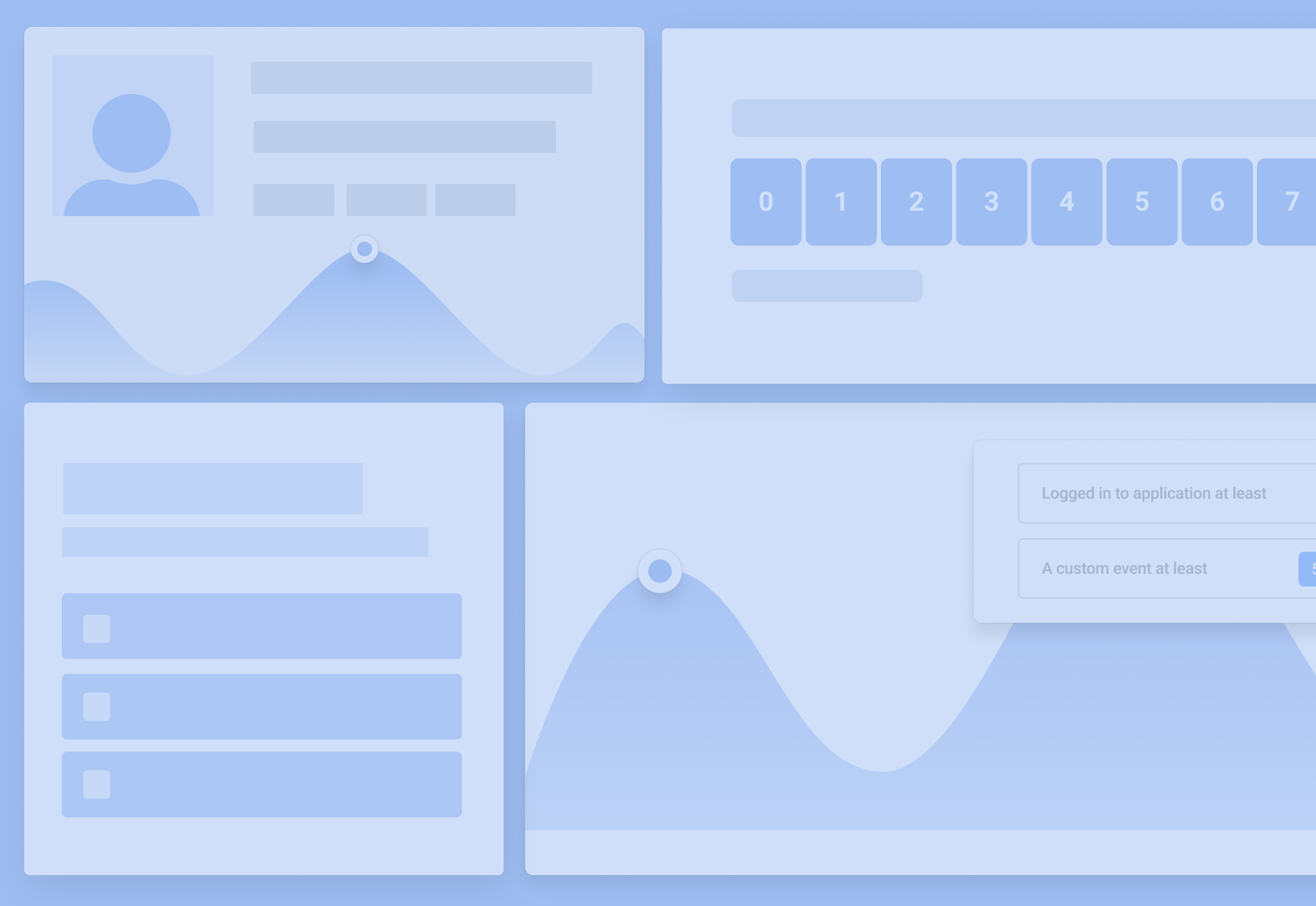Why Use NPS: 7 Reasons to Use NPS Surveys
Are you wondering why use the NPS survey?
It goes without saying – NPS has become an unquestionable standard for customer research.
Most of the major brands have at least dabbled in Net Promoter Score (NPS). And the biggest ones openly state that NPS drives many of their critical business and product development decisions.
But what’s the big deal about it, really? And does it make sense for you to use NPS at all?
Well, that’s what I’m going to help you figure out. In this post, we’ll briefly discuss what NPS is, and then, I’ll tell you exactly why you should be using it, and also when NPS might not be the best option.
I know – It’s a lot to cover, so, let’s dive right in.
What is NPS?
TIP: Below is only a quick recap of the main NPS concepts. To learn everything there is to know on the topic, check out my ultimate guide to Net Promoter Score.
Net Promoter Score, a system developed by, and registered trademark of Bain and Company, is a metric you use to evaluate customers’ overall satisfaction with a brand, product, or service.
However, unlike other customer satisfaction surveys like CSAT or CES, NPS does not focus on satisfaction directly. Instead, with NPS, you evaluate customer satisfaction levels by measuring customer loyalty. Specifically, you research how likely they are to recommend your product to family, friends, or colleagues.
NPS survey format
NPS is a single-question survey. This means that at its core NPS asks just one simple rating question that customers can answer by selecting a relevant value on a scale of 0-10.
The survey question can take many forms, depending on which area of the business you’re evaluating. In its most common form, however, the NPS question looks like this:

NPS data
NPS survey delivers what we call the net promoter score. It’s a metric that breaks down your customers into three groups:
- Promoters – The most loyal customers, who not only can’t imagine living without your product.
- Passives – Satisfied customers.
- Detractors – Unhappy customers.

But the NPS score goes far beyond that. The score highlights a number of critical insights about your customers:
- Whether customers are satisfied with your product at all.
- How many loyal customers do you have, and whether you can expect business growth through positive word-of-mouth as well, and
- How many unhappy customers do you have currently, and once you measure NPS over time, whether your overall satisfaction levels are increasing?
But Why Use NPS?
Can you really get such amazing insights from measuring customer satisfaction with a single-question survey?
Absolutely, and here are seven reasons why running NPS surveys is beyond critical for your growth.

#1. NPS is ridiculously simple and intuitive to use
First of all, the overall concept behind NPS is super simple to grasp. This means that you don’t have to be a statistician or data scientist to get incredible insights from the NPS score. All you need to understand is that happy customers are more likely to tell others about you and boost growth through referrals.
And so, the higher your NPS score, the more happy customers you have, and the more referrals you can expect.
Setting up and delivering the survey is simple as well. You can email the survey to customers, set it to display to website visitors, use an in-app widget, and more.
Finally, the net promoter score calculation can be done on a simple spreadsheet. Although, if you’re using a dedicated NPS software like Refiner, the tool will analyze the data for you automatically.
#2. The score indicates your word-of-mouth potential
Did you know that 23% of people talk about their favorite products with friends and family every day?
Yes, every day!
But there is more – 88% of us trust in a brand more when a friend or colleague has recommended it. (Similarly, 26% of us will avoid a brand, if they’ve heard a negative story about it from the people they know.)
Such data makes it clear that word-of-mouth is critical for growing a business.
The problem? Well, you, most likely, can’t tell how much word-of-mouth could you count on, right?
That’s where NPS comes in handy as well.
NPS allows you to evaluate customer loyalty, and discover how many of your users would happily recommend you to their friends, family, or colleagues.
What’s more, NPS data will also tell you how many unhappy customers you have, and what goes with it, what is the danger that your brand receives negative word-of-mouth.
#3. The score also gives you the big picture of your customer base
Other customer satisfaction surveys, like CSAT and CES, focus on customer experience after a specific interaction with a brand. Such an approach is useful when you want to evaluate satisfaction across various single interactions with your business, of course.
NPS, on the other hand, reveals their overall sentiment towards your product. With NPS, you can tell whether customers can’t imagine being able to work without your product or use it only because they haven’t found a better alternative at the moment.
#4. With NPS you can classify and understand your customer base better
One of the main data points NPS delivers is a clear division of your customer base into three categories – Promoters, Passives, and Detractors. Your score will tell you which group prevails among your customers and follow up with Promoters and Detractors to either get more reviews or fix their relationship with the brand.
#5. Net Promoter Score is easy to use for benchmarking
NPS is a standardized metric, used by countless companies worldwide. Because of that, you can easily benchmark your performance against other companies in your industry, niche, or product category.
Similarly, the unified format of the NPS score makes it easy to benchmark internally and run subsequent surveys to monitor how the score changes over time.
#6. The survey results provide actionable insights and direction for business improvement
There’s a big misconception about NPS. According to some founders, the survey delivers nothing more than an indication of how well they’re doing with customer satisfaction.
Now, to be clear – That is one insight you gain from running NPS surveys.
But it’s not the only one.
You see, NPS allows you to gain incredibly actionable insights to drive the business forward, like these:
- Identify customer issues with the product
- Fine-tune product roadmap
- Reduce churn
- Boost social proof, and generate reviews or social media mentions
- Identify ways to upsell existing customers
- Improve customer success and more.
TIP: To find out more, check out my complete guide on how to use NPS scores to boost growth.
#7. NPS is inexpensive to run regularly
It’s a well-known fact that surveys deliver the best insights over time. Running a survey once gives you an idea of where you are now. But to avail of the benefits of NPS fully, you must run it regularly.
By doing so, you can observe how customer satisfaction improves over time, and collect benchmark data to monitor your progress.
The good news – NPS is simple and inexpensive to run regularly. Software like Refiner allows you to segment customers, and schedule surveys to reach them at the best time.
In short, NPS is a fantastic survey type to evaluate customer loyalty and satisfaction and gain insights to propel your business forward.
But great as the survey is, there are downsides to NPS too, and I think it’s only fair that we cover them as well.
Con #1. NPS can lack specific insights
This is particularly true if you only run the basic version of NPS, focusing on the single rating question we’ve discussed above. In such a case, the survey delivers your Net Promoter Score and helps you break down customers into Promoters, Passives, and Detractors.
That’s a hugely valuable insight, of course. But I admit that it also lacks more in-depth information, like why someone might not be satisfied with your product, for instance.
There is a way to get it, though – By adding an open-ended follow-up question to the survey. Such a question allows you to dig deeper into the person’s situation, and uncover the reasons for their score.

Con #2. NPS delivers results but you need to implement them to gain full value from the survey
I’ve been repeating this over and over again in this post but it’s true – the Net Promoter Score delivers incredible insights to drive a business forward. But the data means nothing unless you act on it, and start changing your business to make it even better for customers.
The above is one criticism of NPS I hear often. Sure, the survey is powerful. But the data is just that, a score and additional feedback. You see the real power of the survey only when you’ve acted on it, and start seeing major improvements in the score.
Coincidentally, that’s when you also notice boosts in revenue and growth.
In short, using NPS is more than well worth it.









